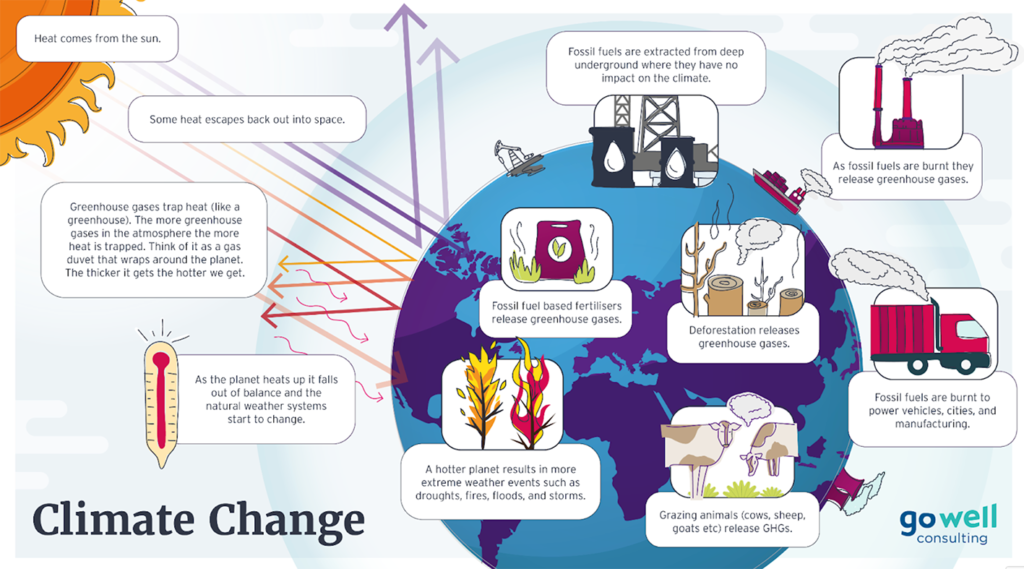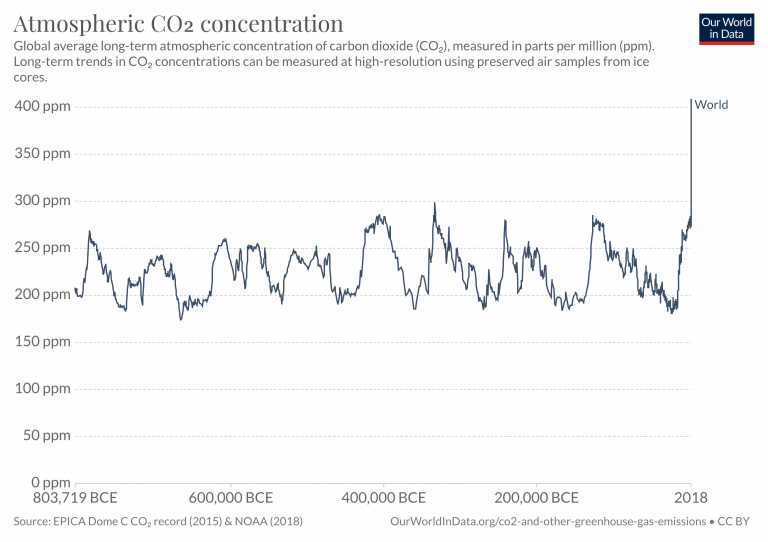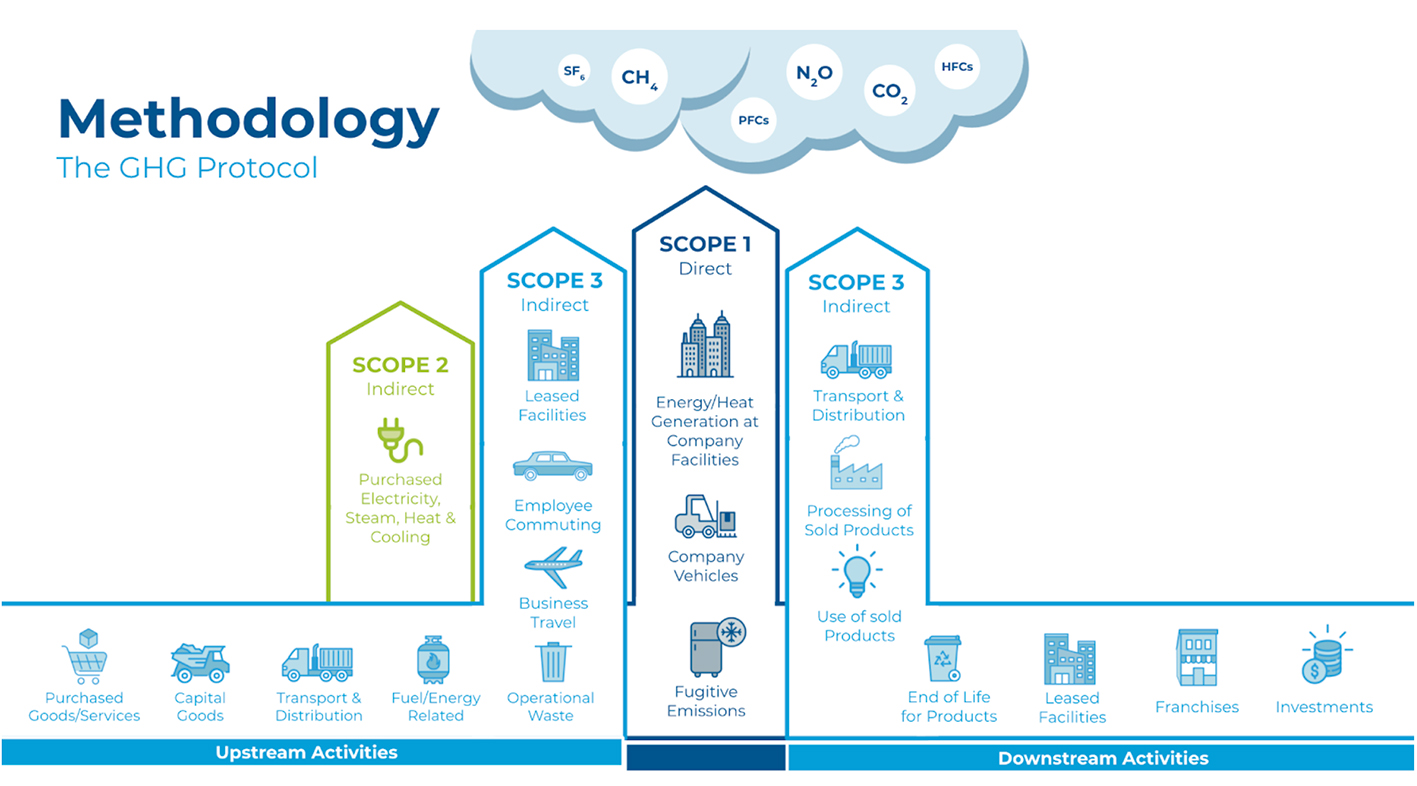About the Climate Emergency
BREAKING DOWN CLIMATE CHANGE
Why is climate change occurring?
- The earth is surrounded by an atmosphere that is made up of greenhouse gases, which protect the planet from ultraviolet radiation, solar wind and cosmic rays. The atmosphere also, really importantly, traps heat like a duvet on a bed.
- A greenhouse gas (GHG) is a type of gas that is capable of trapping heat in the Earth’s atmosphere, similar to the way a greenhouse works. The most well-known greenhouse gas is carbon dioxide (CO2), but others include methane (CH4), nitrous oxide (N2O), and fluorinated gases. These gases play a vital role in regulating the Earth’s temperature and keeping the planet warm enough to support life.
- The concentration of greenhouse gases in the atmosphere has increased significantly due to human activities, such as the extraction and burning of fossil fuels and deforestation (there are many other human activities that release GHGs). This increase has resulted in an enhanced greenhouse effect (our “gas duvet” has gotten thicker) causing the Earth’s average temperature to rise and our climate to change.
- The amount of GHGs in the atmosphere is directly correlated with the average temperature. The more GHGs in the atmosphere, the thicker our “gas duvet” becomes and the more our climate changes, making life for human beings (and almost all other species) more and more difficult to sustain.

How do we know?
Because we track it, and have been for a long time using sophisticated technology similar to what you will find in a smartphone. Scientists also use methods such as ice cores, which involves drilling hundreds or even thousands of metres into ice sheets (see here for a great video of this). These ice cores provide direct information about the concentrations of greenhouse gases in the atmosphere from thousands of years ago (because the ice compounds over centuries and millennia trapping air in the form of bubbles), and how they have changed over time. The oldest ice core is from Antarctica and is 2.7-million-years old – the start of the ice ages (P. Voosen, Science Journal, 2017).
This graph shows the changes in atmospheric CO2 over the past 400,000 years.

Today atmospheric GHGs are measured in real-time using specialised sensors in observatories all around the world, including one at Barring Heads, Wellington, New Zealand. You can follow that link to find out the current concentration of GHGs in the local atmosphere.
It is worth noting that the globally accepted level of CO2 in the atmosphere that would allow a stable climate for human beings to thrive is 350 parts per million (ppm).
The data being obtained from these atmospheric sensors can be directly correlated with changes to our climate and more extreme and frequent weather events.
For example:
- Aotearoa’s top four warmest years on record have all occurred since 2016. 2022 was the warmest year on record, based on NIWA’s “Seven Station Series” which began in 1909, surpassing the record set just last year.
- Global sea levels reached new record highs in 2022, with notable acceleration over the past three decades (CarbonBrief, 2023).
- Japan had a heatwave that was the worst documented streak of hot weather since records began in 1875 (NOAA National Centers for Environmental Information, 2022). It’s reported that over 15,657 people were taken to hospital during this time.
- This State of the Cryosphere Report 2022 IPCC Sixth Assessment concludes that complete loss of Arctic sea ice in summer is now inevitable.
What needs to happen?
The science of climate change is very complex but also very simple. To maintain a global climate that allows human beings (and almost all other species) to inhabit this planet we must keep the increase in global temperature to no more than 1.5 °C above pre-industrial levels. To do that we need to stop the concentration of GHG’s in the atmosphere getting any higher, and then work on bringing the level back down to a safe balance. This safe concentration is generally agreed as 350ppm (parts per million) of CO2 in the atmosphere. The concentration at NIWA’s atmospheric monitoring station at Baring Head (near Wellington) on February 27th, 2023 was 414.7ppm. See here for the latest daily reading.
If we tip over 1.5 °C the planet will cross a number of thresholds and made it impossible to prevent the worst consequences of climate change. So the critical goal is to keep warming below 1.5 °C above pre-industrial levels by ensuring the level of GHGs in the atmosphere (the gas duvet) does not get any thicker. The planet is already at 1.1 °C above pre-industrial levels.
If you are wanting to learn more and dive a little deeper we highly recommend this infographic.
In Summary on a global scale we need to:
- Stabilise and then reduce concentrations of CO2 and other greenhouse gases in Earth’s atmosphere. This needs to be done rapidly and on a huge scale.
- Limit the global temperature to 1.5 °C above pre-industrial levels.
What Businesses Need to Do
Businesses need to act. Quickly. They need to ensure they have a strong understanding of climate science and how and why the climate is changing, and they need to ensure that every business decision is considered against how they will achieve net-zero emissions (they are responsible for taking the same volume of GHGs out of the atmosphere as they emit). Below are some of those steps businesses must take to reduce their emissions and achieve carbon neutrality:
- Reduce emissions now. As much as possible, as fast as possible. (See our Emissions Mapping and Reduction Plan service offering).
- Map your emissions and gather detailed information on where they are coming from and the volume you are emitting (measured as carbon dioxide equivalent CO2-e) (See our Emissions Mapping and Reduction Plan service offering).
- Engage with your suppliers and collaborate on ways to reduce emissions.
- Engage and support your employees on ways to reduce their emissions.
- Engage, influence, and support your industry and other businesses to reduce their emissions.
Mapping, Reducing, and Offsetting Emissions
Emissions mapping
Emissions mapping, carbon mapping, carbon footprinting, and greenhouse gas reporting all refer to the process of accounting for the emissions your organisation is responsible for producing.
The process involves identifying your sources and sinks (areas your organisation is responsible for absorbing GHGs out of the atmosphere) and creating an emissions inventory.
An emissions reduction plan
After working out your total tonnes of carbon dioxide equivalent (tCO2e – see below for explanation) an emissions reduction plan will lay out targets and actions needed to reduce your atmospheric pollution. To have credibility this must be done in line with climate science e.g. don’t just pick a number out of thin air (pun intended).
Carbon offsetting/carbon credits
Offsetting your emissions involves paying money to someone else who is actively sequestering carbon (taking it out of the atmosphere – typically through planting trees), reducing emissions (e.g. building a wind turbine to generate electricity reducing the need for burning fossil fuels) or avoiding emissions (such as paying landowners not to chop down a forest). These offset projects are mapped and measured to establish how many tonnes of CO2e they are sequestering, reducing or avoiding (data that must be independently verified to have any credibility). However many tonnes of CO2e they are calculated to be sequestering, reducing, or avoiding can then become a carbon credit. For example, if a forest is planted and it is calculated to sequester 10,000 tonnes of CO2e each year then that forest owner can sell 10,000 carbon credits per year. 1 tonne of carbon = 1 credit. Note – trees have a growth curve like humans – they start slow, grow rapidly, taper off, then die, so the amount of CO2 they sequester (and the number of carbon credits assigned to their sequestration) changes accordingly.
Carbon offsets are sold through either a mandated platform – in Aotearoa it is the Emissions Trading Scheme (ETS) which certain industries have to be a part of – or through voluntary markets. The price of the carbon offset in the ETS is dictated by the government and market demand (read here for the latest pricing), whereas the cost of offsets in the voluntary market is dictated by the owner of the offset project and market demand. Some credits are priced as low as $25 while others are as high as $145. This obviously results in a considerable variation in total offsetting costs for organisations. Most businesses voluntarily offsetting will buy a range of credits from different projects.
Typically organisations that are voluntarily offsetting their emission will buy the equivalent number of credits to match their carbon footprint for the year (emissions need to be accounted for every year), e.g.. if their footprint was 100tCO2e they would purchase 100 credits to offset their emissions by 100%. These organisations will also often purchase certifications with brand marks that they can display to their customers and other stakeholders.
Some organisations choose to offset more than 100%, e.g. 120% or 200%. These businesses can then claim to be carbon positive/negative, and/or climate positive/negative. Yes, both “negative” and “positive” are used to communicate the same meaning. This a great example of where legislation is way behind marketing. Further to this, there is no rule of far over 100% an organisation’s offsets should be to claim positive/negative status.
At Go Well, we are strong believers that purchasing carbon credits to offset emissions should be done for those very last emissions you can not eliminate despite your best efforts. We are not fans of businesses who pay to pollute.
The absolute priority globally is to reduce emissions as fast as possible to stay under 1.5°C.
Organisational Mapping & Product Mapping
Organisational Mapping
This provides an overview of the emissions released across the whole organisation including different locations, projects and products. Information is then provided on the volume of emissions in total, and across your “emissions inventory”, e.g. freight, electricity, business travel, etc.
The below image illustrates the variety of scopes and categories that make up an organisation’s inventory and what they need to account for. For every industry, there are mandatory emissions to account for and voluntary. The more emissions sources accounted for the better, but the more data (and time) is required.

Product Mapping
Product mapping involves doing a Lifecycle Analysis (LCA) which is a comprehensive piece of emissions accounting zoomed right into one product. It includes all the emissions associated with creating that product from the extraction, transport, and processing of its raw materials, right through to its manufacturing, distribution, and the emissions generated at its end of life (recycling, landfill etc).
Undertaking a LCA is an expensive and time-consuming project but it provides valuable detailed information. It also allows a product to display a “carbon number”, e.g. “this t-shirt is responsible for 8.5tCO2e to be emitted across its lifetime.”
Businesses may choose to offset this carbon number to claim that their product is carbon or climate neutral/zero (or positive/negative).
Carbon dioxide equivalent (CO2-e, or CO2e, or CO2-eq)
Different GHGs are better or worse at trapping heat, as well as all lasting different lengths of time in the atmosphere. So that there is consistency, CO2e is used to express the total amount of greenhouse gases emitted, by converting all emissions into the equivalent amount of CO2 that would have the same warming effect. For example, one tonne of methane has the global warming potential of 28 times greater than one tonne of carbon dioxide, so it would be counted as 28 tonnes of CO2e.
What Individuals Need to Do
The scale of the reductions required and the speed at which they need to happen means that we require all hands on deck. This is not just a problem for businesses and governments to solve. Yes, they have a leading role to play, but we also need every citizen to take steps to reduce their own emissions.
Below is a list of simple steps you can take to reduce the volume of emissions you are responsible for, and what you can do to help remove CO2 from the atmosphere:
- Consume less and consume mindfully (think carefully about who you are giving your money to).
- Shop second-hand.
- Care for and repair what you do own to extend its life for as long as possible.
- Eat less meat and dairy. Try starting with one day a week free of each, or both.
- Never throw away edible food.
- Compost or feed to worms your food scraps and any inedible food.
- Stop paper bank statements and pay your bills online.
- Check that your Kiwisaver and other investments are invested in line with your values (see Mindful Money).
- Follow science-based organisations or individuals on social media
- Turn off the lights when you leave the room and replace light bulbs with efficient bulbs when blown.
- Shop local.
- Vote in your local and national elections for politicians and parties that have robust policies to achieve a net-zero economy as rapidly as possible.
- Bike, walk or take public transport (reduce your car use as much as possible even if it is a hybrid or EV).
- Volunteer your time to plant trees and / or weed young trees (they take about 2-3 years to establish themselves).
- Organise a tree planting day in your community.
- Talk about climate change with your family, colleagues, friends, and community and the steps that need to be taken to ensure we have a habitable planet.
Learn more about our world with our useful resources.
